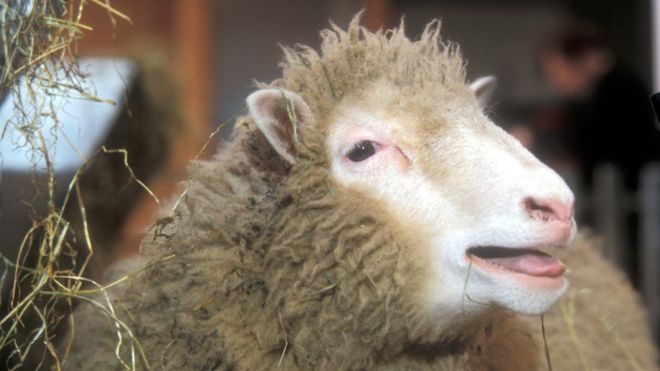By Pallab Ghosh
Science correspondent, BBC News
4 July 2016
The birth of Dolly the sheep seemed one of those moments in scientific research that would change the world forever.
The cloning of the first animal from an adult cell was a remarkable scientific achievement. It promised new treatments for debilitating diseases. But it also raised fears of cloned human beings, designer babies and a dystopian future.
Twenty years on, neither the hopes nor the fears have been realised. So what is Dolly's legacy?
 I first saw Dolly in 1997 at the Roslin Institute just outside Edinburgh. She stood apart from the other sheep in the pens at this agricultural research centre. She stood prouder, her fleece seemed like a lion's mane and there was an aura about her.
I first saw Dolly in 1997 at the Roslin Institute just outside Edinburgh. She stood apart from the other sheep in the pens at this agricultural research centre. She stood prouder, her fleece seemed like a lion's mane and there was an aura about her.
Dolly's creation had echoes of Mary Shelley's classic novel Frankenstein, in which inanimate tissue was brought to life by electricity.
Dolly was created from DNA taken from a cell taken from an sheep. The technique involved putting the DNA into an empty eggshell and then zapping it with electricity. This created an embryo.
Researchers at Roslin then implanted the embryo into the womb of a sheep which grew into Dolly - an exact genetic copy of the sheep from which the skin cell was taken.
It took 277 attempts to clone Dolly and there were many miscarriages on the way.













No comments:
Post a Comment
You only need to enter your comment once! Comments will appear once they have been moderated. This is so as to stop the would-be comedian who has been spamming the comments here with inane and often offensive remarks. You know who you are!